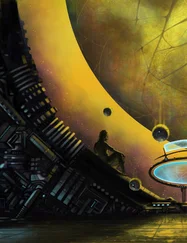Vampires were accidentally rediscovered when a form of experimental gene therapy went curiously awry, kick-starting long-dormant genes in an autistic child and provoking a series of (ultimately fatal) physical and neurological changes. The company responsible for this discovery presented its findings after extensive follow-up studies on inmates of the Texas penal system; a recording of that talk, complete with visual aids, is available online; [1] http://www.rifters.com/blindsight/vampires.htm
curious readers with half an hour to kill are refered there for details not only on vampire biology, but on the research, funding, and “ethical and political concerns” regarding vampire domestication (not to mention the ill-fated “Taming Yesterday’s Nightmares For A Brighter Tomorrow” campaign). The following (much briefer) synopsis restricts itself to a few biological characteristics of the ancestral organism:
Homo sapiens vampiris was a short-lived Human subspecies which diverged from the ancestral line between 800,000 and 500,000 year BP. More gracile than either neandertal or sapiens , gross physical divergence from sapiens included slight elongation of canines, mandibles, and long bones in service of an increasingly predatory lifestyle. Due to the relatively brief lifespan of this lineage, these changes were not extensive and overlapped considerably with conspecific allometries; differences become diagnostically significant only at large sample sizes (N>130).
However, while virtually identical to modern humans in terms of gross physical morphology, vampiris was radically divergent from sapiens on the biochemical, neurological, and soft-tissue levels. The GI tract was foreshortened and secreted a distinct range of enzymes more suited to a carnivorous diet. Since cannibalism carries with it a high risk of prionic infection, [2] Pennish, E. 2003. Cannibalism and prion disease may have been rampant in ancient humans. Science 300: 227-228.
the vampire immune system displayed great resistance to prion diseases, [3] Mead, S. et al. 2003. Balancing Selection at the Prion Protein Gene Consistent with Prehistoric Kurulike Epidemics. Science 300: 640-643.
as well as to a variety of helminth and anasakid parasites. Vampiris hearing and vision were superior to that of sapiens ; vampire retinas were quadrochromatic (containing four types of cones, compared to only three among baseline humans); the fourth cone type, common to nocturnal predators ranging from cats to snakes, was tuned to near-infrared. Vampire grey matter was “underconnected” compared to Human norms due to a relative lack of interstitial white matter; this forced isolated cortical modules to become self-contained and hypereffective, leading to omnisavantic pattern-matching and analytical skills. [4] Anonymous., 2004. Autism: making the connection. The Economist , 372(8387): 66.
Virtually all of these adaptations are cascade effects that—while resulting from a variety of proximate causes—can ultimately be traced back to a paracentric inversion mutation on the Xq21.3 block of the X-chromosome. [5] Balter, M. 2002. Ehat made Humans modern? Science 295: 1219-1225.
This resulted in functional changes to genes coding for protocadherins (proteins that play a critical role in brain and central nervous system development). While this provoked radical neurological and behavioral changes, significant physical changes were limited to soft tissue and microstructures that do not fossilise. This, coupled with extremely low numbers of vampire even at peak population levels (existing as they did at the tip of the trophic pyramid) explains their virtual absence from the fossil record.
Significant deleterious effects also resulted from this cascade. For example, vampires lost the ability to code for γ-Protocadherin Y, whose genes are found exclusively on the hominid Y chromosome. [6] Blanco-Arias, P., C.A. Sargent, and N.A. Affara 1. 2004. A comparative analysis of the pig, mouse, and human PCDHX genes. Mammalian Genome , 15(4): 296-306.
Unable to synthesise this vital protein themselves, vampires had to obtain it from their food. Human prey thus comprised an essential component of their diet, but a relatively slow-breeding one (a unique situation, since prey usually outproduce their predators by at least an order of magnitude). Normally this dynamic would be utterly unsustainable: vampires would predate humans to extinction, and then die off themselves for lack of essential nutrients.
Extended periods of lungfish-like dormancy [7] Kreider MS, et al. 1990. Reduction of thyrotropin-releasing hormone concentrations in central nervous system of African lungfish during estivation. Gen Comp Endocrinol. 77(3):435-41.
(the so-called “undead” state)—and the consequent drastic reduction in vampire energetic needs—developed as a means of redressing this imbalance. To this end vampires produced elevated levels of endogenous Ala-(D) Leuenkephalin (a mammalian hibernation-inducing peptide [8] Cui, Y. et al. 1996. State-dependent changes of brain endogenous opioids in mammalian hibernation. Brain Research Bulletin 40(2):129-33.
) and dobutamine, which strengthens the heart muscle during periods on inactivity. [9] Miller, K. 2004. Mars astronauts ‘will hibernate for 50 million-mile journey in space’. News.telegraph.co.uk, 11/8/04.
Another deleterious cascade effect was the so-called “Crucifix Glitch”—a cross-wiring of normally-distinct receptor arrays in the visual cortex, [10] Calvin, W.H. 1990. The Cerebral Symphony: Seashore Reflections on the Structure of Consciousness. 401pp. Bantam Books, NY.
resulting in grand mal -like feedback siezures whenever the arrays processing vertical and horizontal stimuli fired simultaneously across a sufficiently large arc of the visual field. Since intersecting right angles are virtually nonexistent in nature, natural selection did not weed out the Glitch until H. sapiens sapiens developed Euclidean architecture; by then, the trait had become fixed across H. sapiens vampiris via genetic drift, and—suddenly denied access to its prey—the entire subspecies went extinct shortly after the dawn of recorded history.
You’ll have noticed that Jukka Sarasti, like all reconstructed vampires, sometimes clicked to himself when thinking. This is thought to hail from an ancestral language, which was hardwired into a click-speech mode more than 50,000 years BP. Click-based speech is especially suited to predators stalking prey on savannah grasslands (the clicks mimic the rustling of grasses, allowing communication without spooking quarry). [11] Pennisi, E. 2004. The first language? Science 303: 1319-1320.
The Human language most closely akin to Old Vampire is Hadzane. [12] Recordings of Hadzane click-based phonemes can be heard at http://hctv.humnet.ucla.edu/departments/linguistics/VowelsandConsonants/index.html .
SLEIGHT OF MIND
The Human sensorium is remarkably easy to hack; our visual system has been described as an improvised “bag of tricks” [13] Ramachandran, V.S. 1990. pp346-360 in The Utilitarian Theory of Perception, C. Blakemore (Ed.), Cambridge University Press, Cambridge.
at best. Our sense organs acquire such fragmentary, imperfect input that the brain has to interpret their data using rules of probability rather than direct perception. [14] Purves, D. and R.B. Lotto. 2003. Why We See What We Do An Empirical Theory of Vision. Sinauer Associates, Sunderland, MA. 272 pp.
It doesn’t so much see the world as make an educated guess about it. As a result, “improbable” stimuli tends to go unprocessed at the conscious level, no matter how strong the input. We tend to simply ignore sights and sound that don’t fit with our worldview.
Читать дальше








